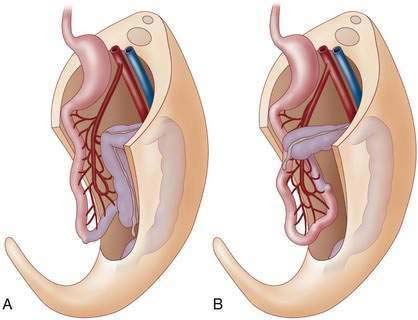Intestinal malrotation is a birth defect due to malformation of the intestinal tract. It occurs when the intestine does not make the normal turns. Intestinal malrotation can give rise to another problem called Volvulus in which the intestine gets twisted and blocked leading to prevention of food from being digested normally.

Symptoms of Malrotation and Volvulus
Symptoms generally occur within first week or within the first year of life and may include the following:
-
Abdominal pain & swelling
-
Diarrhea or Constipation
-
Rectal bleeding
-
Rapid heart rate & breathing
-
Bloody stools
-
Green vomiting
Diagnosis of Malrotation and Volvulus
A physical exam, medical history and following diagnostic procedures are performed to confirm malrotation and volvulus:
-
Blood tests to check electrolytes
-
Stool guaiac to detect blood in stool
-
CT or CAT scan
-
Abdominal X-ray
-
Barium swallow/upper GI test
-
Barium enema
-
Flexible sigmoidoscopy
Laparoscopic surgery for Malrotation and Volvulus
Laparoscopic Ladd procedure is performed for Malrotation and Volvulus under general anaesthesia through small incisions in the abdomen. One of the incisions is used to insert a port (nozzle) that fills the carbon dioxide gas into the abdomen to inflate it. Now laparoscope is inserted through another incision. A laparoscope is a telescope lookalike with a light and camera on the end. It allows the surgeon to clearly view inside of the abdomen on the monitor outside. After thorough evaluation, volvulus (if present) is reduced, mesenteric bands are divided, and small bowel is placed on the right and large bowel on the left of the abdomen, followed by appendectomy. After the completion of procedure, incisions are closed with sutures or staples, or covered with glue-like bandage.
Advantages of Laparoscopic Ladd procedure
-
Less damage to the surrounding tissues
-
Faster recovery
-
Only few hours or overnight hospitalization
-
Earlier ambulation
-
Sooner return to work
-
Very less pain during and after the procedure
-
Smaller incisions
-
Negligible risks and complications
-
Less chances of wound infection
-
Early ambulation
-
High success rate








